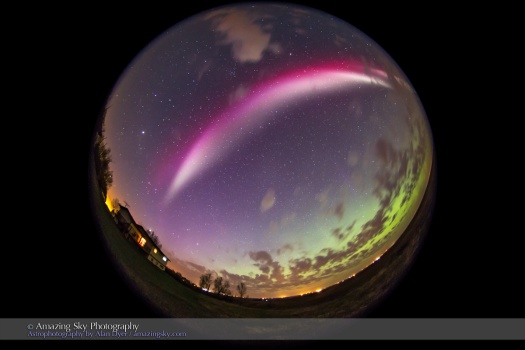
Stargazers in western Canada will have seen him – Steve, the odd auroral arc.
There’s been a lot of publicity lately about an unusual form of aurora that appears as a stationary arc across the sky, isolated from the main aurora to the north. It usually just sits there – motionless, featureless, and colourless to the eye, though the camera can pick up magenta and green tints.
We often see these strange auroral arcs from western Canada.
In lieu of a better name, and lacking a good explanation as to their cause, these isolated arcs have become labelled simply as “Steve” by the aurora chasing community (the Alberta Aurora Chasers Facebook group) here in Alberta.
In a gathering of aurora chasers at Calgary’s Kilkenny Pub, aurora photographer extraordinaire and AAC Facebook group administrator Chris Ratzlaff suggested the name. It comes from the children’s movie Over the Hedge, where a character calls anything he doesn’t understand “Steve.” The name has stuck!
The 270° panorama from March 2, 2017 shows Steve to the west (right) and east (left) here, and well isolated from the main aurora to the north.
This is the view of that same March 2, 2017 arc looking straight up, showing Steve’s characteristic gradient from pink at top though white, then to subtle “picket-fence” fingers of green that are usually very short-lived.
The view above is Steve from exactly 6 months earlier, on September 2, 2016. Same features. I get the impression we’re looking up along a very tall but thin curtain.
Another view of the September 2, 2016 Steve shows his classic thin curtain and gradation of colours, here looking southeast.
Looking southwest on September 2, 2016, Steve takes on more rippled forms. But these are very transient. Indeed, Steve rarely lasts more than 30 minutes to an hour, and might get bright for only a few minutes. But even at his brightest, he usually looks white or grey to the eye, and moves very slowly.
Here’s a classic Steve, from October 1, 2006 – a white featureless arc even to the camera in this case.
So what is Steve?
He is often erroneously called a “proton arc,” but he isn’t. True auroral proton arcs are invisible to the eye and camera, emitting in wavelengths the eye cannot see. Proton auroras are also diffuse, not tightly confined like Steve.
Above is Steve from August 5, 2005, when he crashed the Saskatchewan Summer Star Party, appearing as a ghostly white band across the sky. But, again, the camera revealed his true colours.
Steve Auroras in 2015 from Alan Dyer on Vimeo.Here are a couple of time-lapses from 2015 of the phenomenon, appearing as an isolated arc overhead in the sky far from the main auroral activity to the north. I shot these from my backyard in southern Alberta. In both clips the camera faces north, but takes in most of the sky with a fish-eye lens.
In the first video clip, note the east-to-west flow of structure, as in classic auroras. In the second clip, Steve is not so well-defined. Indeed, his usual magenta band appears only briefly for a minute or so. So I’m not sure this second clip does show the classic Steve arc.
The origin and nature of Steve are subjects of investigation, aided by “citizen science” contributors of photos and videos.
Local aurora researcher Dr. Eric Donovan from the University of Calgary has satellite data from the ESA Swarm mission to suggest Steve is made of intensely hot thermal currents, and not classic electrons raining down as in normal auroras. He has back-acronymed Steve to mean Strong Thermal Emission Velocity Enhancement.
Learning more about Steve will require a unique combination of professional and amateur astronomers working together.
Now that he has a name, Steve won’t be escaping our attention any longer. We’ll be looking for him!
— Alan Dyer / May 12, 2017 / © 2017 Alan Dyer/AmazingSky.com

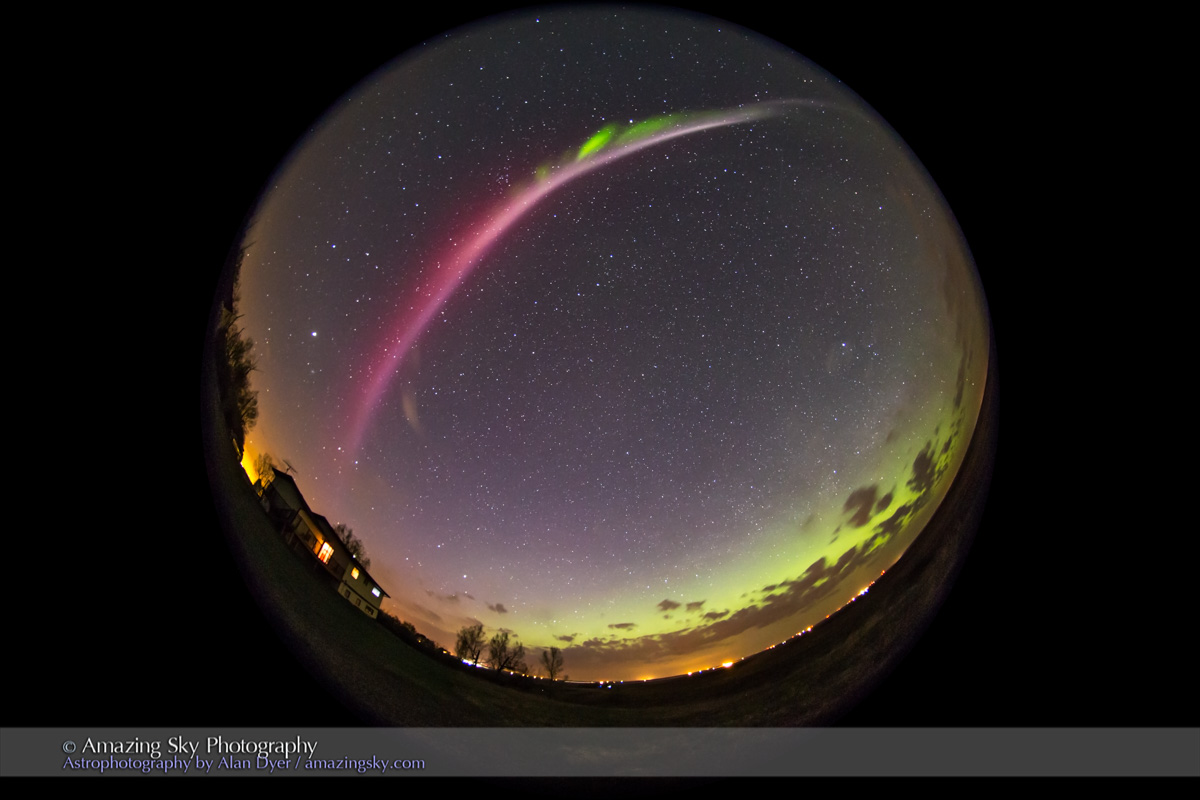
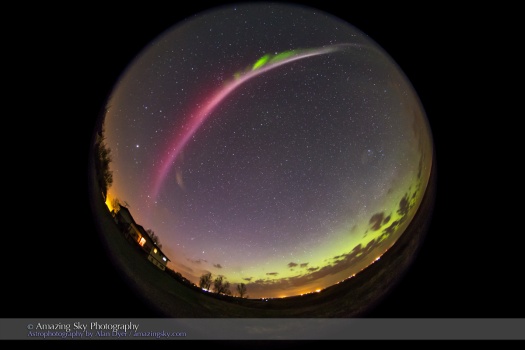

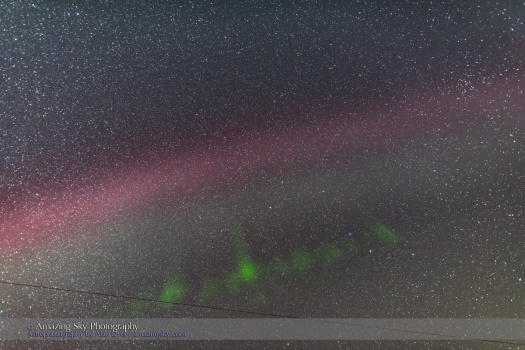
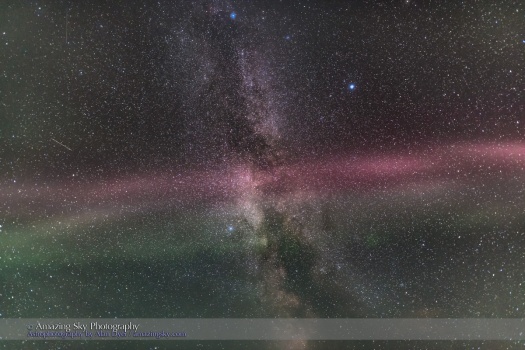
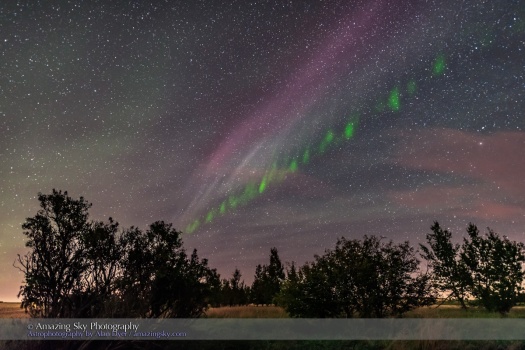
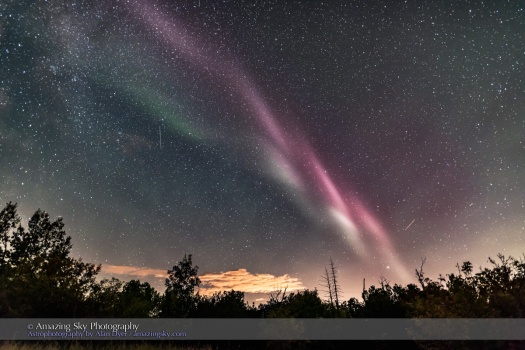


Does STEVE have any other cousins named STEVE elsewhere on planets or moons in our solar system? Is STEVE only Terrestrial or does he go to visit his cousins on Neptune or Jupiter? Can STEVE exist outside our solar system? Is STEVE social (visits other planets, like B612) or is STEVE a homebody, never leaving the Earth?
I don’t think anything like STEVE has been detected on other planets, but then again it’s difficult to detect a STEVE arc from orbit around Earth. Most observations are from the ground, as STEVE is so short-lived.
“Steve” captures the essence of your Amazing Sky site. It’s nice to read and see the historical chronology of this enigma. I look forward to what the research can explain in the future. Keep looking up!